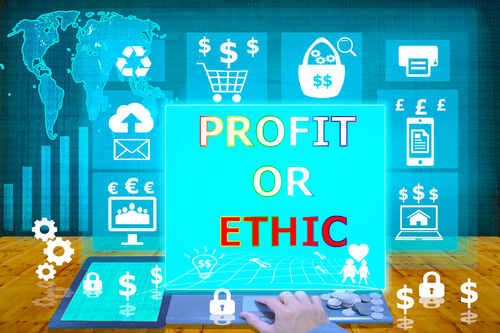When Customers Can See More Cost than Benefit in CSR
This is one of our free-to-access content pieces. To gain access to all Ideas for Leaders content please Log In Here or if you are not already a Subscriber then Subscribe Here.

Companies should not assume that all customers see the benefit in corporate social responsibility. Some focus on the costs — and are concerned that unfair prices are being used to finance CSR.
The business literature almost unanimously presents a simple, positive picture of the beneficent effects of corporate social responsibility on customer attitudes toward the corporation.
Through a series of four quantitative studies involving more than 4,000 customers and participants, a team of researchers revealed the much more ambiguous reality of how customers view companies that engage in corporate social responsibility.
Specifically, the researchers looked at the issue of price fairness. Customers perceive the fairness of a price through a simple calculation: if the perceived benefit from the product or service meets or exceeds the perceived purchase cost, the price is fair.
The first study in the series uncovered a major differentiating factor: whether or not participants viewed the CSR activities as intrinsically motivated — that is, doing it simply because one feels that it is the right thing to do rather than to gain some strategic or financial advantage. The more participants in the survey believed a company was intrinsically motivated, the more they thought the company kept its prices fair.
The second study offered a first clue for this differentiation. It comes back to benefits vs. costs. The more customers in the survey believed the company was intrinsically motivated, the more they told the researchers that the benefits of CSR outweighed the costs — and thus, the more they believed that the company’s pricing was fair. The reverse was also true: The less customers in the survey believed the company was intrinsically motivated, the more they believed that the costs of CSR outweighed the benefits — and thus, the more they believed that the company’s pricing was unfair.
To uncover the deeper psychological mechanisms that led to these two different perspectives of benefits and costs, the researchers conducted a third study that added the factors of CSR level and type to the issue of intrinsic vs. extrinsic motivation. Shuttling combinations of the three various factors in and out of multiple scenarios gave the researchers a more granular explanation for customer perceptions.
For example, a high level of CSR activity impressed some customers, but reinforced the skepticism of other customers who saw more cost than benefit. These customers tended to assume that high CSR costs were funded by markups on the company’s products and services, and thus concluded that the company’s prices were unfair.
The type of CSR also made a difference in customer perceptions of price fairness. For many customers, philanthropic CSR benefitted society at large, but didn’t have the same direct benefit as internally targeted business process CSR — socially responsible initiatives for employees, for example. Thus, taking into account the benefit-cost ratio, customers were more likely to believe that philanthropic CSR was more costly than business process CSR, and that companies would have to engage in unfair pricing to cover these costs.
Whether or not customers viewed CSR costs as promotional costs almost made a difference. The more customers thought of CSR as promotional — a clear example of extrinsic motivation — the more they believed that companies were covering CSR costs through unfair prices.
What can companies do to alleviate the negative effects of CSR on price fairness identified in this research?
The first remedy is to assure customers that the CSR costs are not being covered by price markups, but by other sources, such as advertising budgets or executive salaries.
The second remedy involves recognizing that customers expect companies to make a profit. If companies explain that the CSR costs are cutting their profits, customers will forgive some price markups.
To prove the effect of these remedies, the researchers conducted a fourth study that laid out different sources of CSR funding (advertising budgets, executive salaries, profits) — or, for some control groups, kept silent on funding sources. The study confirmed that the best way to alleviate the negative effect of CSR on perceptions of price fairness is to tell customers explicitly from where the money is coming.
This highlights another important lesson: customers are more aware of the cost pressures of companies than many companies realize. As a result, they will respond to cost ‘signaling’ — sharing with customers how costs are met.
The bottom line is that customers don’t automatically view CSR in a positive light. Companies must make an effort to foster the benefit perceptions of CSR and tone down the cost perceptions. Highlighting intrinsic motivation and being transparent on funding sources can make a major difference.

Ideas for Leaders is a free-to-access site. If you enjoy our content and find it valuable, please consider subscribing to our Developing Leaders Quarterly publication, this presents academic, business and consultant perspectives on leadership issues in a beautifully produced, small volume delivered to your desk four times a year.

For the less than the price of a coffee a week you can read over 650 summaries of research that cost universities over $1 billion to produce.
Use our Ideas to:
Speak to us on how else you can leverage this content to benefit your organization. info@ideasforleaders.com